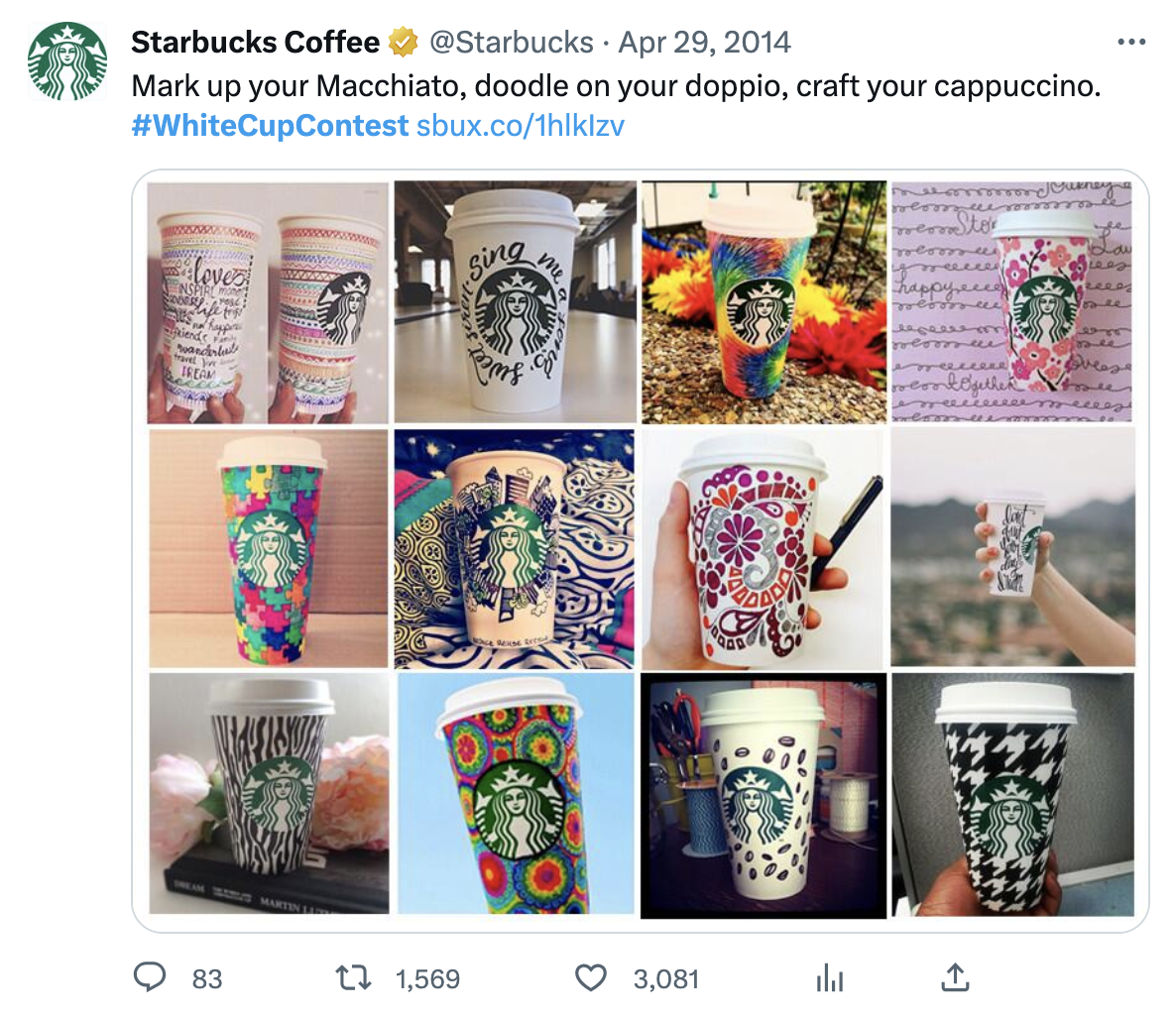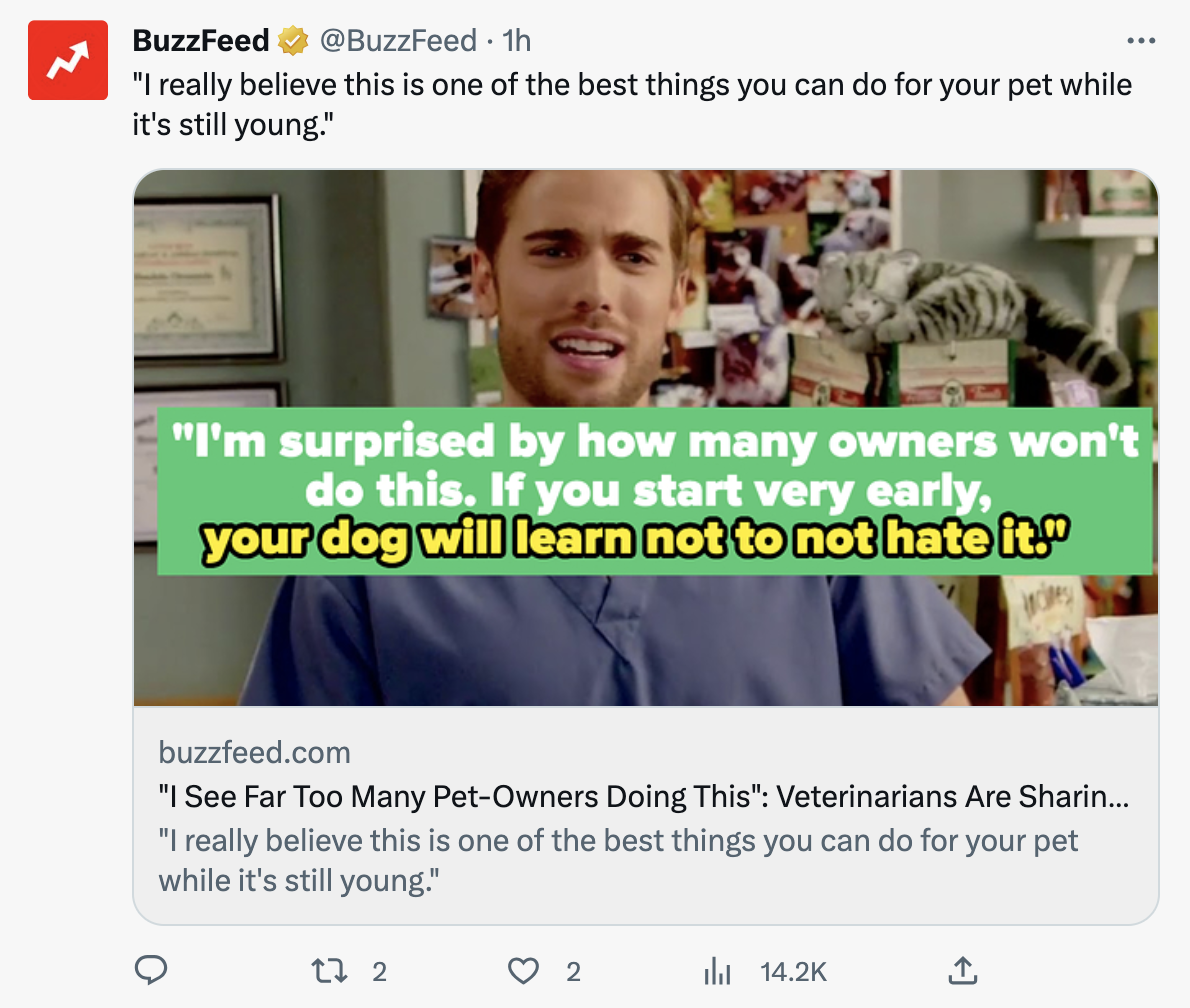- What is social media advocacy?
- Why does your brand need social media advocacy?
- Creating a social media advocacy campaign in 5 simple steps
- Best practices for engaging social media advocates
- Successful social media advocacy examples
- How can Sprinklr’s platform help you harness the power of social media advocacy
What is social media advocacy?
Social media advocacy is the art of tapping into the social connections of those who appreciate and are invested in your brand’s progress. This includes your loyal customers, dedicated employees, trusted partners, influencers and more. You can boost your visibility and sustain ongoing success by harnessing their support.
A social media advocacy strategy transforms your most ardent supporters into brand advocates. Brand advocates are individuals who genuinely adore your brand and willingly promote your offerings on their own social media platforms.
Unlike influencers who are compensated for sponsored content, brand advocates are driven by their passion for your products or services. They willingly join your advocacy program.
Why does your brand need social media advocacy?
Social media advocacy is a mighty tool to showcase your products and services. When your employees, fans, supporters and bloggers share their genuine excitement about your brand on social media, it's more convincing than anything you could write.
These brand advocates help you connect with potential customers and cut through the online noise. They spread the word about your services or products to their connections, answer their questions and even generate positive buzz about your latest offerings. Their influence creates a captivating narrative that resonates with your potential customers.
Top 3 benefits of social media advocacy
Here are some of the benefits of social media advocacy:
Amplified brand awareness: When your customers and fans share positive content about your brand on social media, it creates a ripple effect. This means more people become aware of your brand and the amazing things it offers.
Take the Starbucks’ example. They launched the #WhiteCupContest, urging customers to doodle on their white coffee cups and share their designs with the hashtag. This generated widespread participation and user-generated content, boosting brand awareness as unique Starbucks cup designs were shared across social media.
Source: Twitter
Increased traffic to your website: Positive social media content acts as a magnet, drawing intrigued individuals to explore further. The result? Increased clicks to your website, leading to heightened traffic and the potential for higher conversion rates.
BuzzFeed, for instance, is all about that viral content. They've got this amazing knack for creating relatable stuff that people just can't help but share. It's like they've cracked the code to capturing their audience's attention.
This drives a ton of traffic to their website where you can dive into a world of articles, videos, and even more quizzes. It's basically a never-ending cycle of awesome content and engagement.
Source: Twitter
Quality lead generation: When people show interest in your brand, they are inclined to take the next step. They willingly share their contact information or ask for more details, enabling you to nurture these leads and transform them into loyal customers.
Moving on to the most interesting part: creating a social media advocacy campaign.
Creating a social media advocacy campaign in 5 simple steps
The secret to developing a strong social media advocacy campaign is all about utilizing the communities you already have. But before you begin reaching out to potential advocates, it's crucial to have a well-thought-out plan in place.
Step 1: Figure out your objectives
What do you aim to accomplish through your campaign? Are you looking to raise awareness for a cause, generate website traffic, motivate people to take specific actions or achieve other goals? Once you clearly understand your objectives, you can start developing a comprehensive strategy to achieve them.
Ensure that your objectives are specific, measurable, achievable, relevant and time-bound (SMART).
For example, instead of a vague objective like "raise awareness," set a specific goal like "increase website traffic by 30% in the next three months."
Step 2: Identify your brand advocates
When finding awesome brand advocates on social media, audience intelligence tools, employee advocacy platforms and social listening tools have got your back with some nifty methods.
First up, we've got the good old keyword-driven search campaigns. These campaigns help you find all the social media mentions related to your brand, competitors and industry.
The second method, involves using social media sentiment analysis through natural language processing (NLP). It might sound fancy, but it's actually super helpful. This method groups the positive and negative posts for you, saving you loads of time when searching for those brand advocates who are spreading the love.
And don't worry, we've got method number three. This one zooms in on social media metrics. By keeping an eye out for users who frequently interact with your brand, you'll uncover some real potential brand advocates.
Now, here's the thing. The first two methods analyze individual interactions, so they might not guarantee you'll find all the advocates out there. But they do point you in the right direction and show you users with higher potential. On the other hand, the third method is awesome for spotting community members who might advocate for your content, though not necessarily your brand.
Step 3: Identify your intended audience
Who do you want to reach with your campaign? Understanding your target audience's demographics, interests, concerns and motivations is crucial for creating content that resonates with them. Here’s what you can do:
Conduct market research: Using audience intelligence tools, analyze data and create buyer personas to gain insights into your audience's preferences and behaviors. This information will enable you to tailor your content and messaging effectively.
Engage in social listening: Listen to what your target audience is saying on social media about relevant topics, your brand and competitors. Use social media monitoring tools to track conversations, comments and mentions. Uncover insights and address pain points or trends in your advocacy program.
Segment your audience: Divide your target audience into smaller groups with shared characteristics or interests. Create personalized content for each segment to increase engagement and resonance.
Stay inclusive and diverse: Ensure diversity in your advocacy program to represent various perspectives and backgrounds. Embrace inclusivity in content creation to connect with a broader audience and foster an inclusive community.
Step 4: Craft captivating content
To capture the attention of your target audience, your content should be informative, engaging and visually appealing.
Use a mix of formats such as articles, videos, infographics and interactive elements to cater to different preferences.
Ensure that your content aligns with your campaign objectives and provides value to your audience. Whether you aim to educate, entertain, inspire or persuade, focus on creating high-quality and shareable content that stands out from the competition.
Step 5: Spread the word about your campaign
Utilize various marketing channels to maximize your campaign's reach. Social media platforms are excellent for sharing content and engaging with your audience.
Develop a social media strategy that includes regular posting, community engagement and paid promotions to extend your reach.
Additionally, consider leveraging email marketing to communicate directly with your subscribers and provide updates about your campaign. Paid advertising campaigns, such as search engine marketing or social media advertising, can also amplify your message to a broader audience.
Now why put in all this effort if you're not going to measure performance? Tracking the performance of your campaign is essential to understand what's working and what needs improvement. The key metrics to monitor are: website traffic, engagement rates, conversion rates, follower growth, sentiment score and share of voice.
Read in Detail: 5 Steps for building social media advocacy
Best practices for engaging social media advocates
Social media advocates are valuable assets to any brand. They can help you promote your products and services, reach new customers and build brand awareness. Here are three best practices for engaging social media advocates:
Be authentic and transparent
Your advocates should be able to trust that you're being genuine with them. Don't try to force them to promote your brand if they're not genuinely interested in it. Pay attention to what your advocates are saying and respond to their feedback. This will help you to build relationships with them and keep them engaged with your brand.
Give them a voice
Social media advocates want to feel like they are part of the conversation. This means giving them opportunities to share their thoughts, ideas and experiences with your brand. You can do this by asking them questions, running contests or simply giving them a platform to share their stories.
Reward them for their engagement
Social media advocates are investing their time and energy in your brand. It's important to show your appreciation by rewarding them for their engagement. This could mean giving them exclusive content, discounts or even free products.
Make it easy for people to share your content
Include share buttons on your website and social media pages, and make it easy for people to tag your brand when they share your content.
Successful social media advocacy examples
Social media has proven to be a powerful tool for "doing good," as evidenced by numerous examples of impactful social media advocacy. Let’s explore two successful advocacy campaign examples:
Apple's "Shot on iPhone"
This campaign, which has been running since 2014, encourages iPhone users to share photos they've taken with their phones on social media using the hashtag #ShotoniPhone.
Apple then selects some of the best photos and uses them in its own marketing materials. The campaign has been hugely successful, with over 20 million posts on Instagram alone.
It has also helped boost iPhone sales, as people are more likely to buy a phone that they've seen great photos taken with.
Spotify's "Wrapped"

Source: It’s Nice That
This campaign, which runs every year, celebrates Spotify users' listening habits. Spotify creates personalized playlists and stats for each user, which they can then share on social media. The campaign is hugely popular, with over 1 billion people participating in 2021. It has also been successful in terms of driving engagement on Spotify's social media channels.
“There’s no hiding behind Wrapped. You’re gonna have to own it.”
- Rasmus Wangelin, global head of brand design at Spotify
How can Sprinklr’s platform help you harness the power of social media advocacy
Sprinklr's platform enables you to tap into the potential of social media advocacy in many ways.
Monitoring and listening

Sprinklr enables you to monitor and listen to conversations happening across 30+ social media platforms via social listening tool. You can track brand mentions, keywords and hashtags to identify individuals who are already advocating for your brand or industry.
Engaging advocates
Sprinklr provides tools to engage and nurture relationships with social media advocates. You can identify and reach out to individuals who have shown positive sentiment toward your brand and encourage them to become brand advocates. Sprinklr's platform facilitates direct messaging, commenting and sharing content to foster stronger relationships.Employee advocacy
Sprinklr can also facilitate employee advocacy by providing tools for employees to share company content and messaging on their personal social media profiles. This helps amplify your brand's reach and credibility through your employees' networks.
Measuring advocacy impact
Sprinklr offers robust analytics and reporting capabilities to measure the impact of your advocacy initiatives. You can track metrics such as reach, engagement, sentiment and conversions to understand the effectiveness of your advocacy efforts. These insights can guide your future strategies and help optimize your advocacy programs.
Final thoughts
You can amplify your visibility and connect better with your online community by engaging loyal customers, employees, partners and influencers. Don’t forget: Effective campaigns need clear objectives, captivating content and engaging advocates.
Thank you for contacting us.
A Sprinklr representative will be in touch with you shortly.
Contact us today, and we'll create a customized proposal that addresses your unique business needs.
Request a Demo
Welcome Back,
No need to fill out any forms — you're all set.







![The Best Time to Post on LinkedIn [By Days & Industry]](https://images.ctfassets.net/ukazlt65o6hl/dwAyaQmzYQJRQGd34YkeR/8ea930b229b90a4d3b7d6521a2272ff3/Banner_image.jpeg?w=750&h=428&fl=progressive&q=70&fm=jpg)